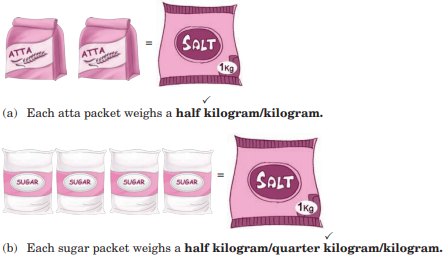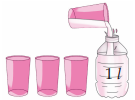Question 1:
Tick (✓) the one which holds more?
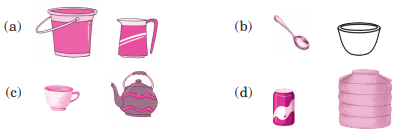
Answer:
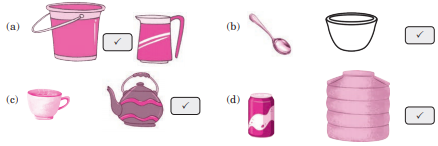
Question 2:
Tick (✓) the shorter object.

Answer:
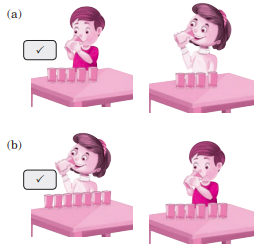
Question 3:
Number the following containers from 1 to 4 in increasing order of their capacity.

Answer:

Question 4:
Tick (✓) whose container holds more water?

Answer:

Question 5:
Ask your family members about the glasses of water they drink every day. Write their names in decreasing order of their capacity to drink water.
- Who drinks the maximum number of glasses of water?
- Who drinks the least water?
Answer:
Try yourself.
Question 6:
Why water is important in our life? How many glasses of water should we drink every day?
Answer:
Water helps to regulate the body temperature and getting rid of wastes. 7–8 glasses of water we should drink everyday
Question 7:
Find three containers of various sizes at home, like a glass, a small bowl and a jug. Take a guess: How many small bowls do you think will fill the glass? And how many glasses will fill the jug? Make your guesses, and then pour water from one container into another to see if your estimations are correct.

Answer:
Try yourself.
Question 8:
Name the containers that are used at your home and can store more water than a glass.
Answer:
Try yourself.
Question 9:
Observe the following containers carefully.

Write the capacity of the following objects in terms of bowls.
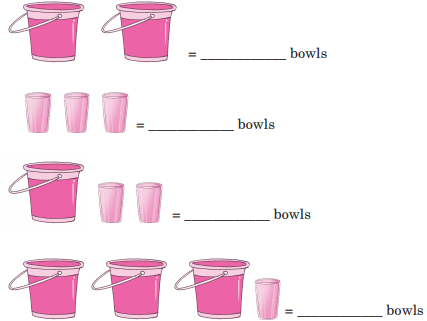
Answer:
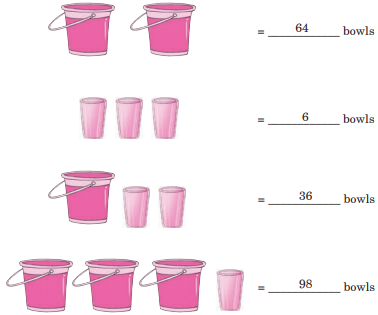
Question 10:
Estimate the capacity of the following objects using the words: more than 1 litre, less than 1 litre or exactly 1 litre.
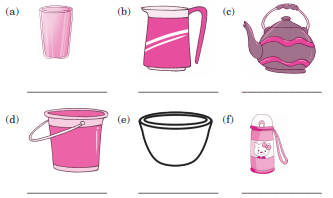
Answer:
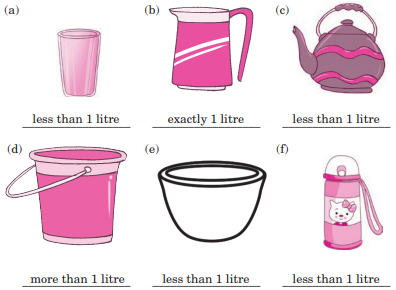
Question 11:
Colour the objects that can hold more than 1 litre of liquid green and those that can hold less than a litre of liquid blue.
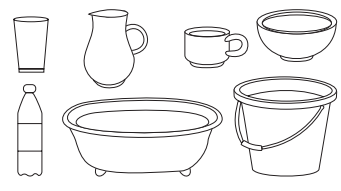
Answer:
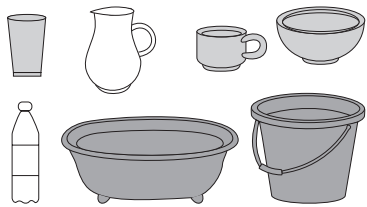
Question 12:
Look at the picture and tick (✓) the appropriate terms.
- The mug holds a litre/half
litre of water.
- The glass holds a litre/half
litre/quarter litre of water.
Answer:
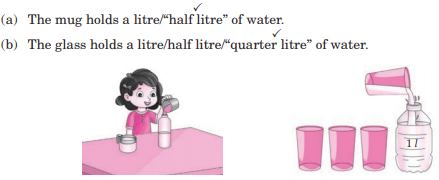
Question 13:
First guess and then check with the 1 litre bottle.
- How much water does a jug used at your home hold? more than/less than/equal to 1 litre.
- How much water does a glass at your home hold? less than/more than/equal to half a litre.
- How much water does a bowl hold? less than/more than/equal to a quarter litre.

Answer:
Try yourself.
Question 14:
Circle the heavier object in each set.
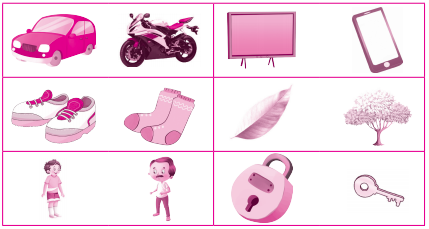
Answer:
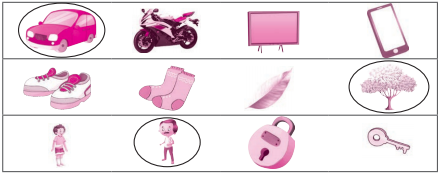
Question 15:
List the following objects in the increasing order of their weight.
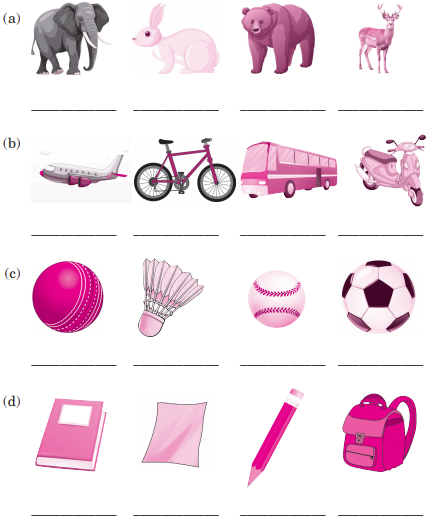
Answer:
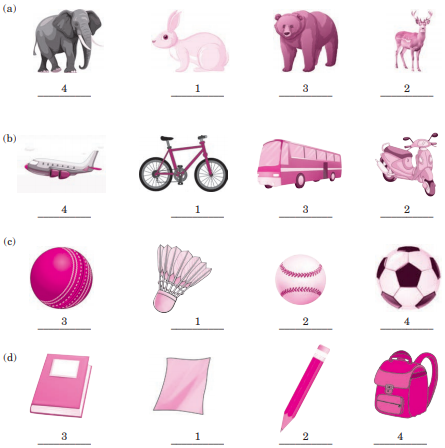
Question 16:
Guess the weight of the following objects and compare the result with your friend’s observation.
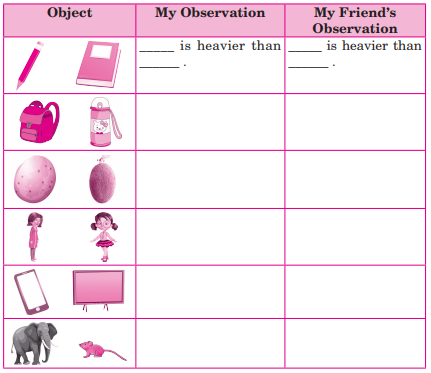
Answer:
Try yourself.
Question 17:
Observe the given weighing balances and fill in the blanks with the words: same, more than or less than.

Answer:

Question 18:
Guess the number of marbles that would require to balance the objects given in the table.
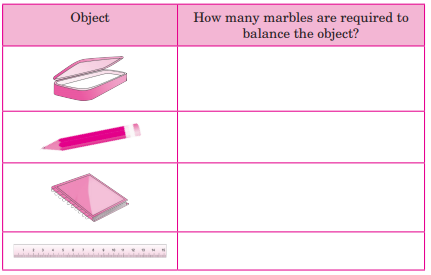
Write the names of all the objects measured in the order of lightest to heaviest.
Answer:
Try yourself.
Question 19:
Circle the objects that weigh more than 1 kilogram.

Answer:

Question 20:
Match the objects to their weights.
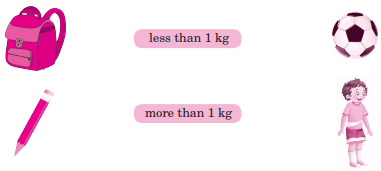
Answer:
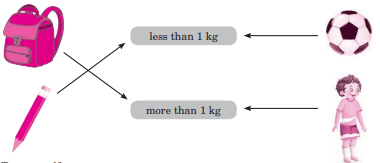
Question 21:
Write the weight of any five objects that are used at your home and weigh more than 1 kg.
Answer:
Try yourself.
Question 22:
Tick (✓) the correct option.
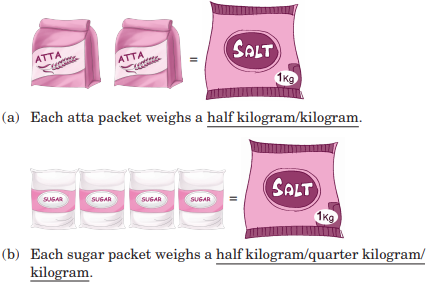
Answer:
